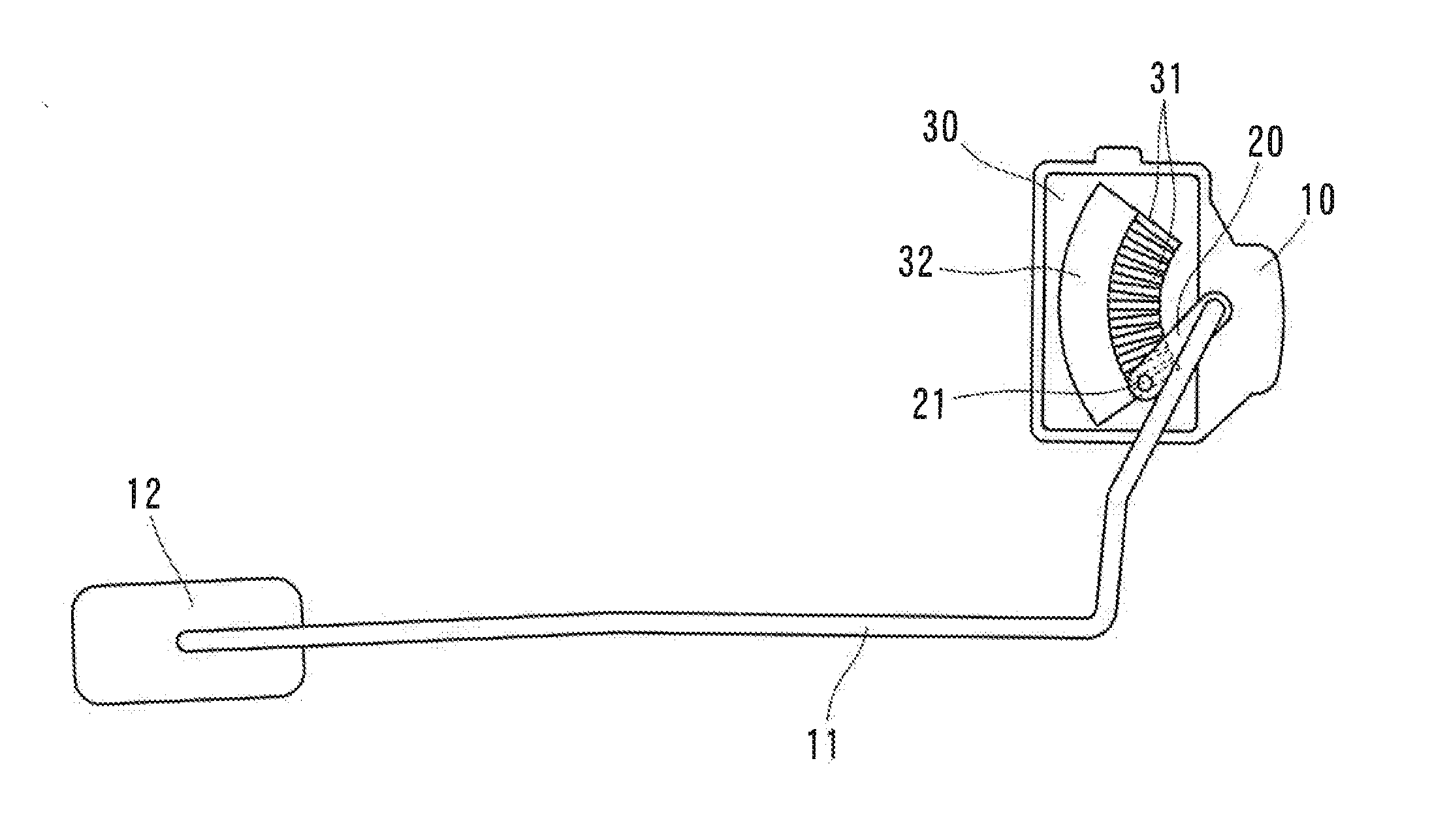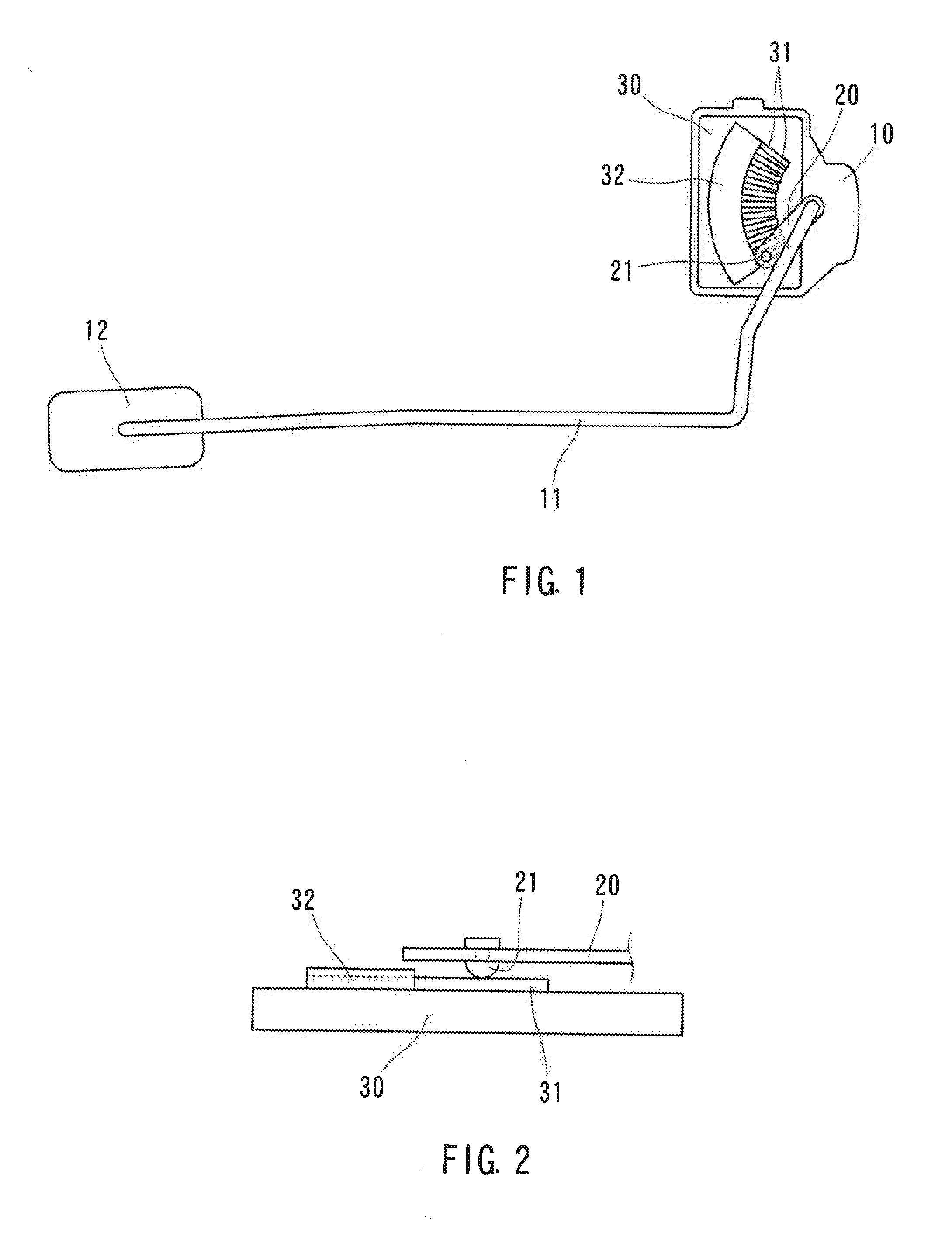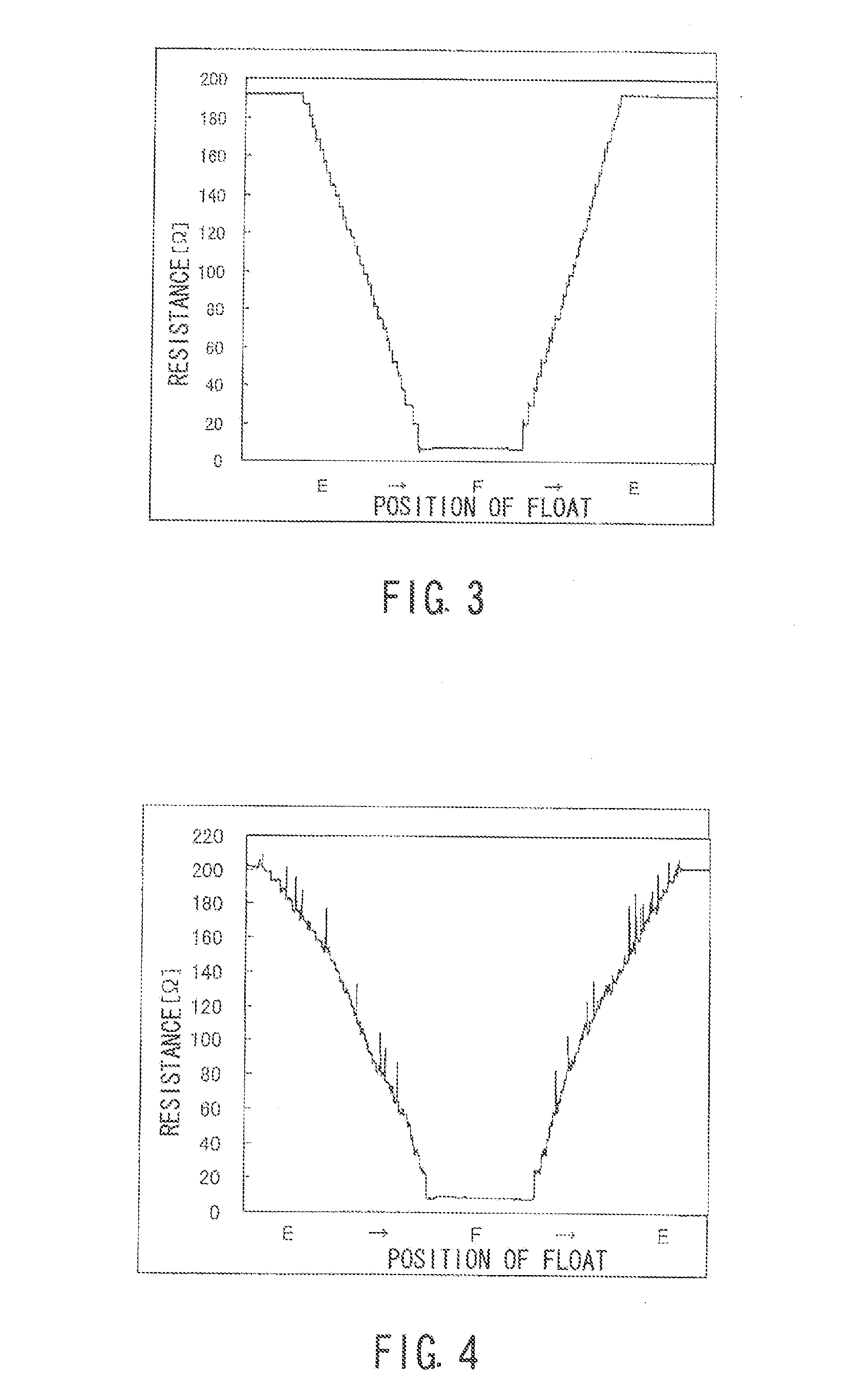Sliding liquid level sensor
a liquid level sensor and sliding technology, applied in liquid/fluent solid measurement, instruments, machines/engines, etc., can solve the problems of reducing detection accuracy, affecting the detection accuracy, and corroding silver, so as to reduce the amount of glass added to the electrodes, reduce the amount of silver sulfide, and reduce the formation of silver sulfid
- Summary
- Abstract
- Description
- Claims
- Application Information
AI Technical Summary
Benefits of technology
Problems solved by technology
Method used
Image
Examples
example 1
[0025]A plurality of electrodes each formed in a strip shape were printed on an alumina plate by a screen printing method, and then were dried and heated. The heating step was carried out at 850° C. for 10 min. The electrodes contained 25% by weight of silver and 75% by weight of palladium and further contained 3.4 parts by weight of glass per 100 parts of combination of silver and palladium. Each of the electrodes was shaped such that its width was about 0.2 mm and its length was about 5 mm, and about 50 electrodes were radially arranged in an arc-shape. Then, a resistor mainly containing ruthenium oxide and glass was formed in a band shape contacting with outer ends of the electrodes through a printing step and a heating step. In addition, a sliding contact point containing 80% by weight of palladium and 20% by weight of nickel was formed to have the thickness of 0.2 mm and was attached to a base made from copper nickel by welding such that the sliding contact point was positioned...
PUM
 Login to View More
Login to View More Abstract
Description
Claims
Application Information
 Login to View More
Login to View More - R&D
- Intellectual Property
- Life Sciences
- Materials
- Tech Scout
- Unparalleled Data Quality
- Higher Quality Content
- 60% Fewer Hallucinations
Browse by: Latest US Patents, China's latest patents, Technical Efficacy Thesaurus, Application Domain, Technology Topic, Popular Technical Reports.
© 2025 PatSnap. All rights reserved.Legal|Privacy policy|Modern Slavery Act Transparency Statement|Sitemap|About US| Contact US: help@patsnap.com



